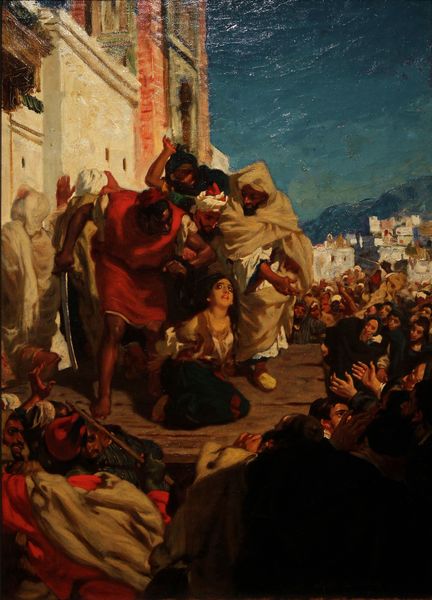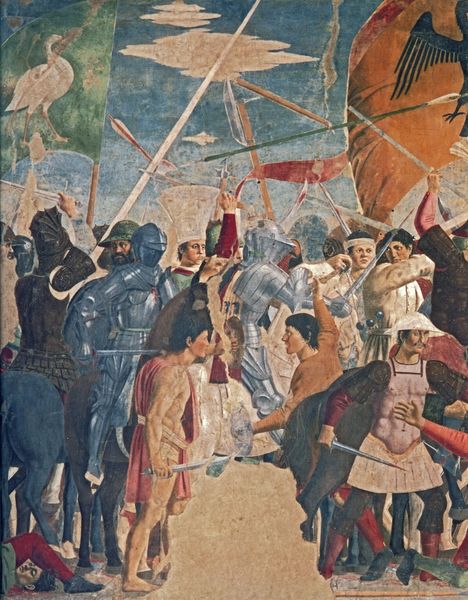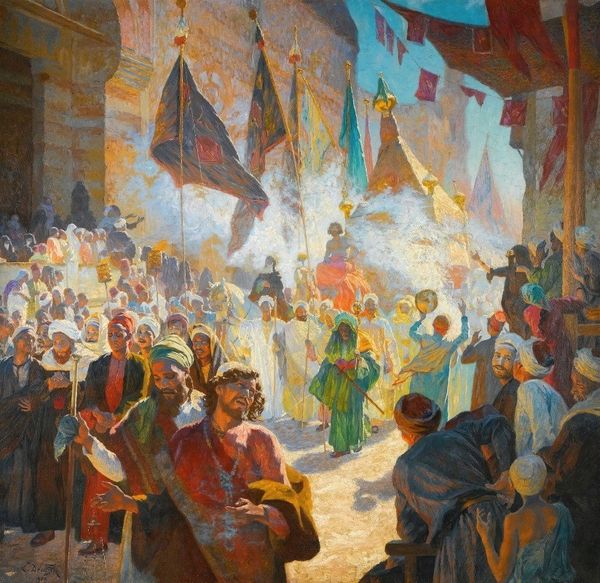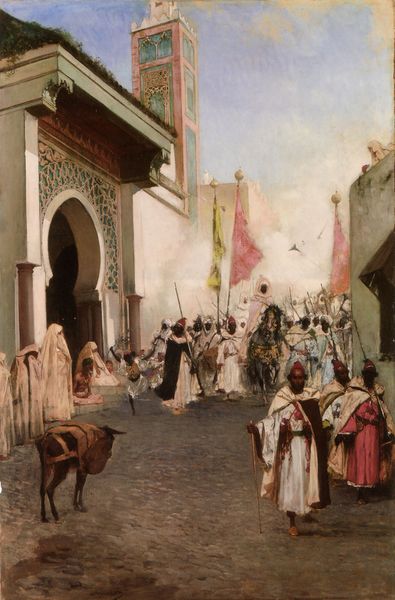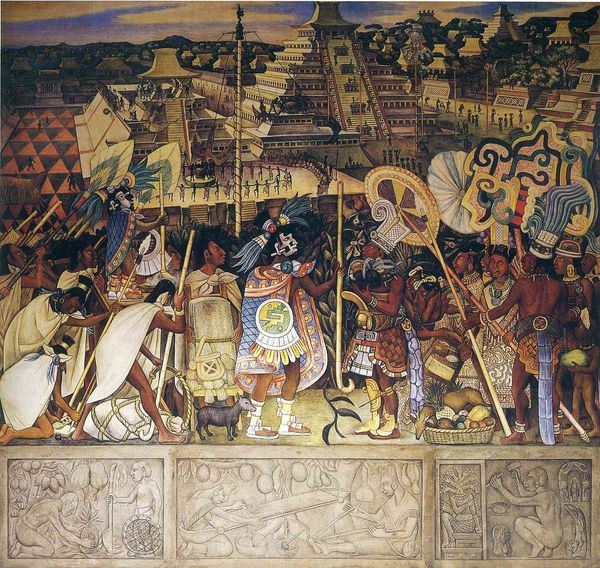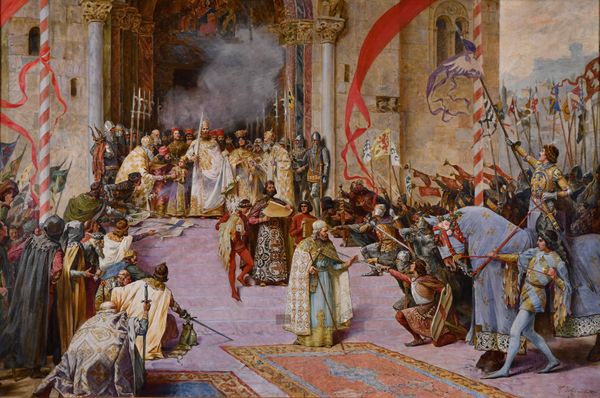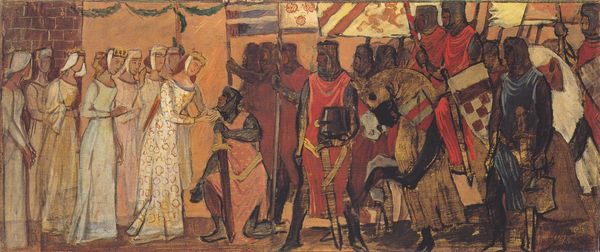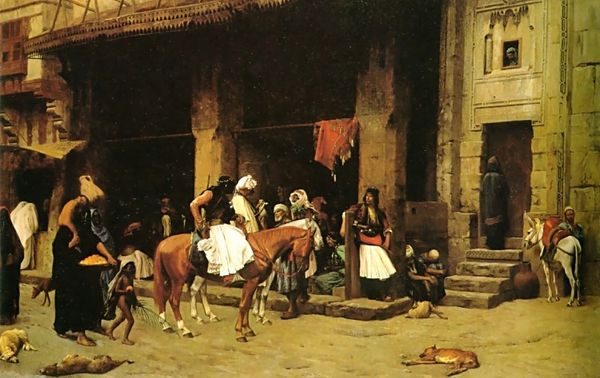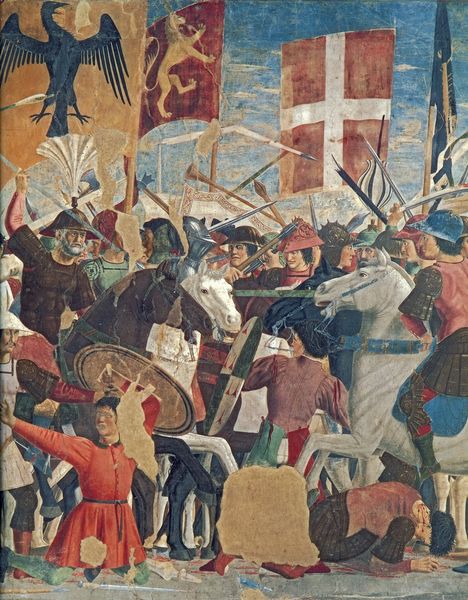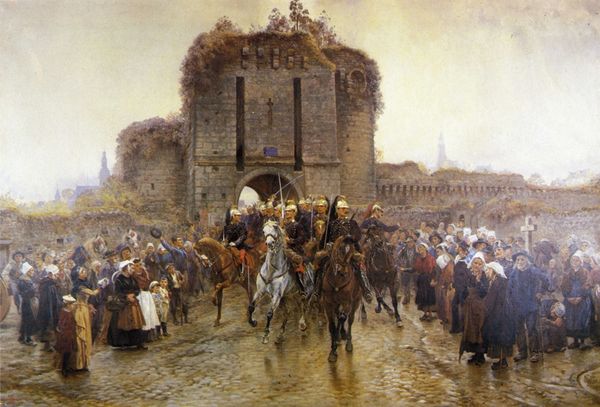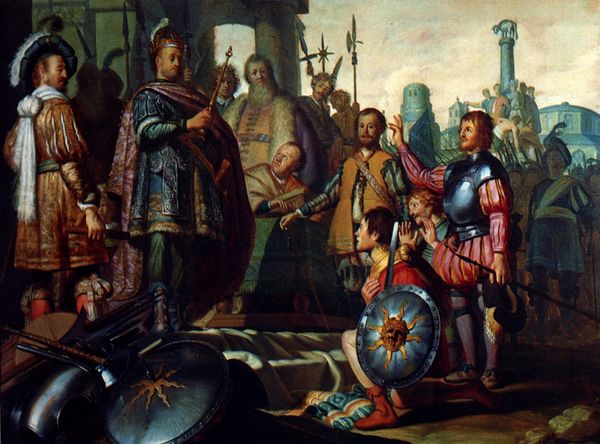
painting, oil-paint, impasto
#
16_19th-century
#
painting
#
painting
#
oil-paint
#
oil painting
#
impasto
#
orientalism
#
genre-painting
#
history-painting
#
academic-art
#
realism
Copyright: Public domain
Curator: This is James Tissot’s “The Latin Patriarch of Jerusalem,” painted in 1875. It’s an oil painting that offers a glimpse into a very specific moment in history. Editor: My first impression is the sheer spectacle. The layering of figures, the various textures created with what appears to be very generous use of oil paint, the color contrasts between the Patriarch and the surrounding crowd. It’s a very busy canvas, almost overwhelming. Curator: Tissot was working in a period increasingly fascinated with the “Orient,” and this painting is a clear example. Consider how the details reflect this fascination. The materials used for clothing, the various national flags presented... These were likely sourced through sketches, photographs, and interactions with individuals returning from or residing in Jerusalem. Editor: I agree about the “Orientalist” aspect, but let’s focus for a moment on how Tissot guides the eye through this dense composition. The orthogonal lines formed by the procession, receding into the distance, establish a strong sense of depth. Notice, too, how the figures are arranged to create focal points that draw you deeper into the painting. Curator: Exactly, and that creates an impression that one's place matters, a strict hierarchy, reinforced by class and religion and nationhood represented through access to the event. There is also a power in who commissions paintings like these, who controls representation and visibility. Who, therefore, controlled the historical narrative. Editor: What strikes me is the ambivalence embedded in Tissot's approach. While there’s undeniable artistry, a critical perspective forces us to ask, whose gaze are we viewing this spectacle through? There’s tension there, a space for both aesthetic appreciation and critical engagement. Curator: And these paintings themselves would circulate as commodities, available for wealthy Europeans who wanted access to the spectacle without needing to make the voyage themselves. This creates an interesting intersection of art, travel, and economic status that is difficult to overlook when standing in front of it. Editor: Well said, I hadn't considered the importance of who buys such work. Looking more closely at the visual elements makes me further appreciate his skillful orchestration of visual drama, and how this, like many paintings, isn’t just a representation, but an intricate argument constructed through form. Curator: A complicated moment in history indeed! It makes one wonder, if Tissot were alive today, what commentary would he be making, what would he be materializing for us through the commodity form?
Comments
No comments
Be the first to comment and join the conversation on the ultimate creative platform.
